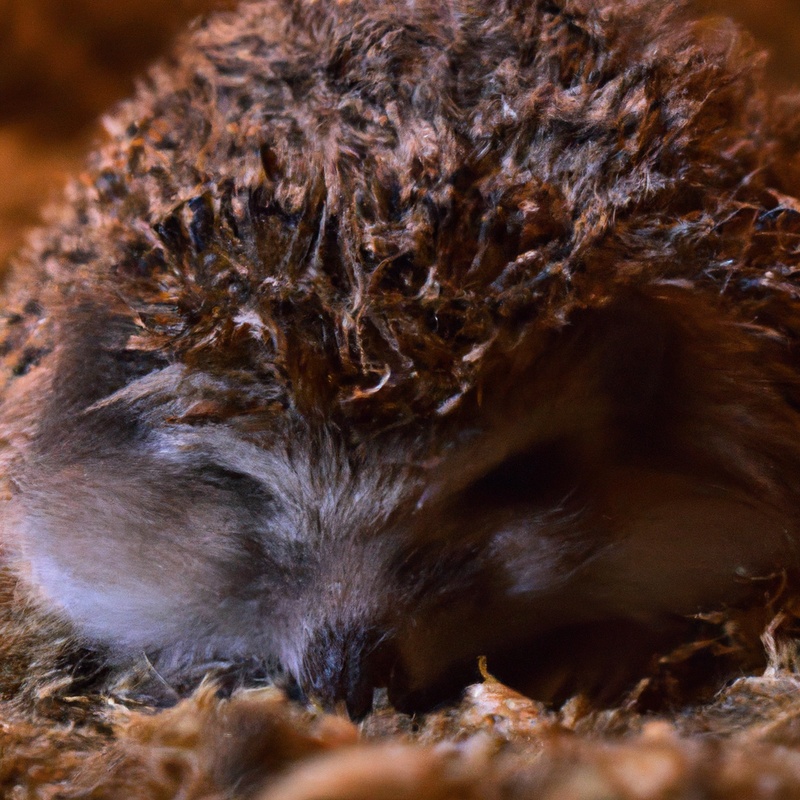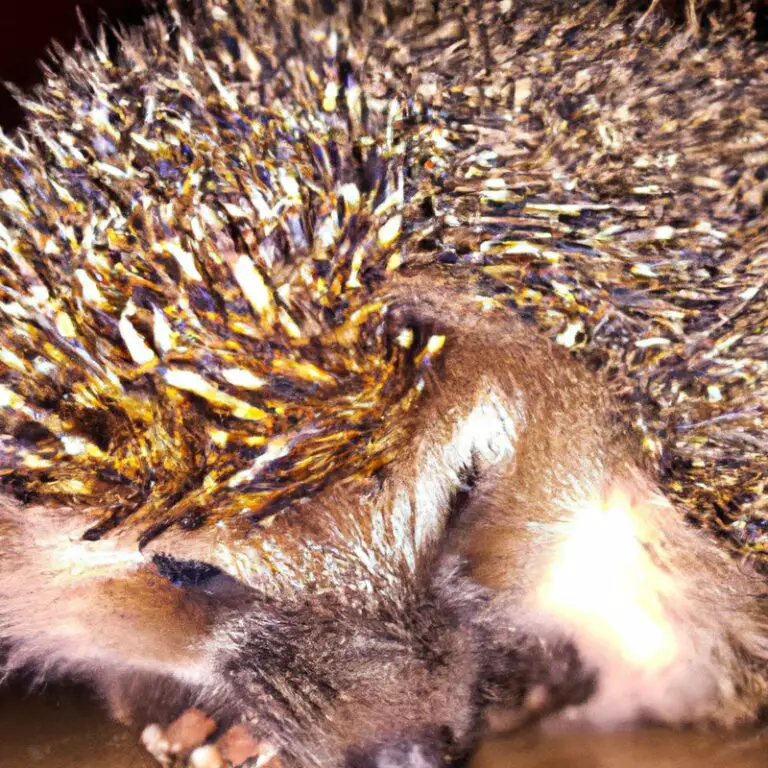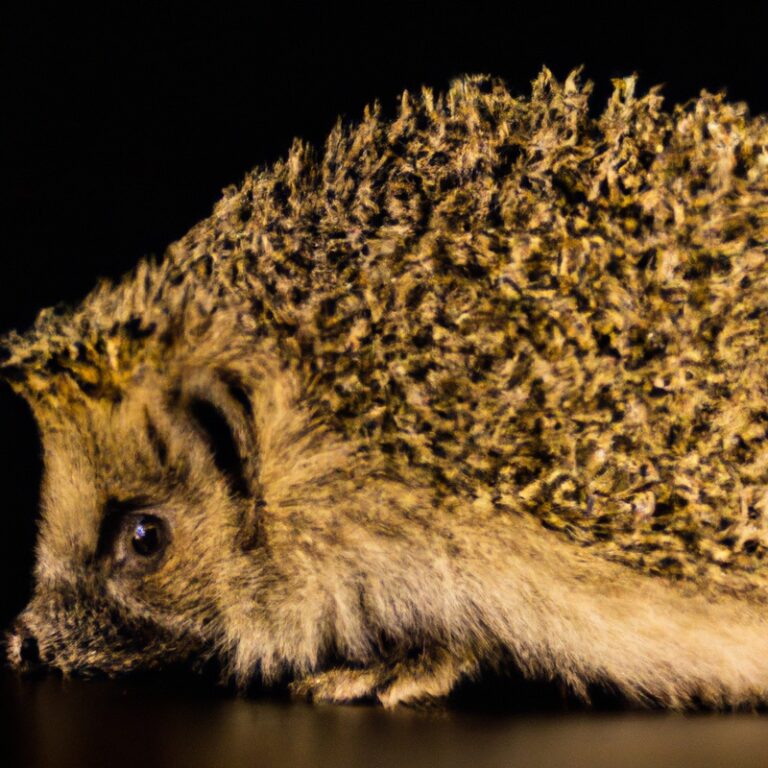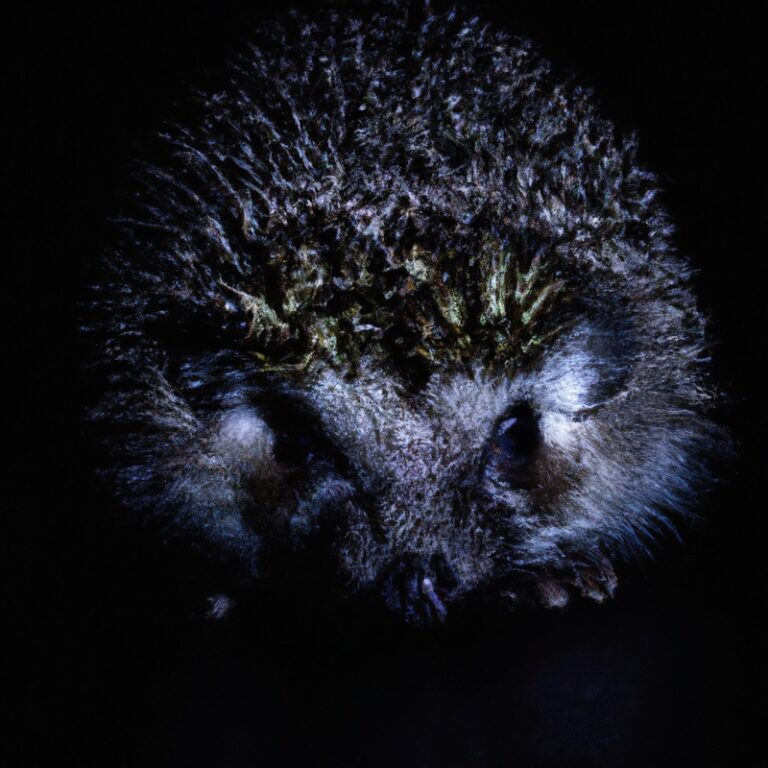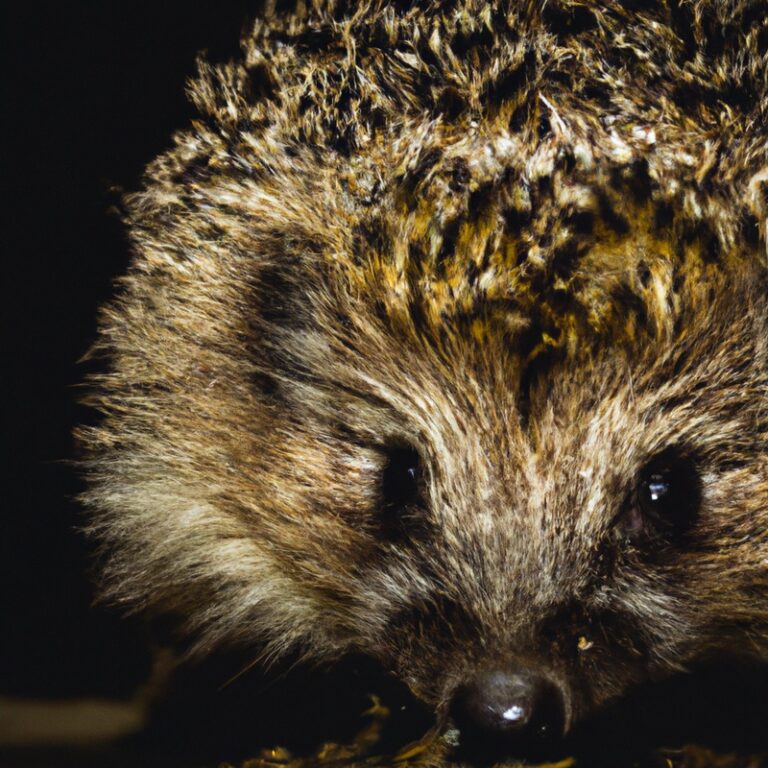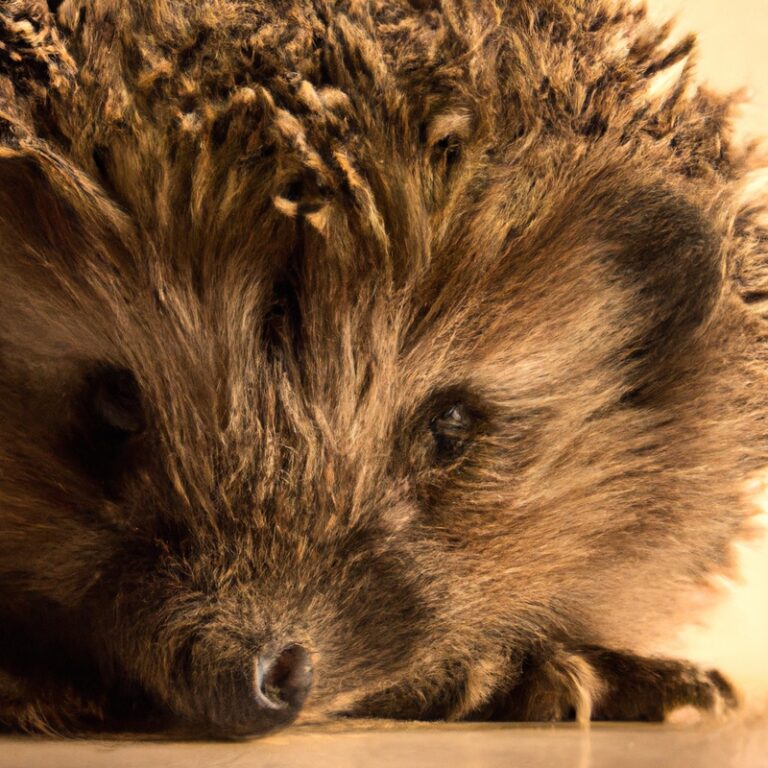What Is The Hedgehog’s Role In Controlling Moth Populations?
Key Takeaways:
- Hedgehogs play a crucial role in controlling moth populations by preying on adult moths and their larvae.
- The presence of hedgehogs can help maintain a balance in moth populations, preventing overpopulation and potential damage to crops and gardens.
Are you tired of battling with moth infestations in your garden or home? Well, you’ll be delighted to learn about the unsung heroes of pest control: hedgehogs! These adorable creatures play a crucial role in controlling moth populations and ensuring the balance of our ecosystems.
In this article, we’ll delve into the fascinating world of hedgehogs, understanding their habitats, feeding habits, and reproductive cycles.
We’ll explore how hedgehogs target moth eggs, larvae, and pupae, and the significant impact they have in reducing moth populations. Get ready to unleash the power of nature’s pest control experts and create a hedgehog-friendly environment that will keep those unwanted moths at bay.
| Hedgehog | Moth Population Control | |
| Natural Behavior | Hedgehogs are natural predators of moths. | Hedgehogs feed on various moth species, helping to control their populations. |
| Diet | Hedgehogs consume moths as part of their diet. | Moths provide a source of food for hedgehogs. |
| Nocturnal Activity | Hedgehogs are active at night when moths are most active. | Hedgehogs can actively prey on moths during their peak activity time. |
| Effective Predation | Hedgehogs have sharp teeth and claws to catch and consume moths. | Hedgehogs’ hunting adaptations make them efficient at catching and consuming moths. |
| Population Control | Hedgehogs regulate moth populations by hunting and feeding on them. | Hedgehogs play a significant role in controlling moth populations in their habitats. |
The Life of a Hedgehog
Hedgehogs have unique habitats and diets, and their lifecycle includes mating and raising offspring.
Habitat and diet of hedgehogs
Habitat: Hedgehogs can be found in a variety of habitats, including woodlands, grasslands, and gardens.
They prefer areas with plenty of hiding spots like bushes, hedges, and log piles.
They often make nests in these places to rest and hibernate.
Diet: Hedgehogs are insectivores, which means they eat mainly insects like beetles, slugs, and worms.
They also consume small vertebrates like mice and frogs.
Occasionally, they will eat fruits and berries.
To find their food, hedgehogs use their excellent sense of smell and hearing.

Reproduction and lifecycle of hedgehogs
Hedgehogs have a fascinating life cycle and reproduction process.
They typically breed from April to September.
Females attract males through vocalizations and scent marking.
After mating, the female builds a nest made of leaves and grass to give birth.
The gestation period lasts about 30 to 40 days, after which the mother gives birth to a litter of hoglets.
These hoglets are blind and helpless at first, relying on their mother for nourishment and protection.
As they grow, they start exploring their surroundings and learning how to find food.
At around 6 to 7 weeks old, they become independent and start venturing out on their own.
Hedgehogs can live up to 2-5 years in the wild.
Moth Infestations and Their Impact
Moth infestations can have significant environmental and economic impacts.
Overview of moth infestations
Moth infestations can be a nuisance in homes, gardens, and agriculture. These insects are attracted to light and can damage fabrics, contaminate food, and harm plants.
Moth larvae, or caterpillars, are known for their voracious appetites and can quickly multiply in numbers.
Signs of infestation include holes in clothes, webbing in corners, and chewed leaves on plants. Preventive measures include storing clothes properly, keeping the environment clean, and using pheromone traps.
Controlling moth populations is important to avoid damage and maintain a pest-free environment.
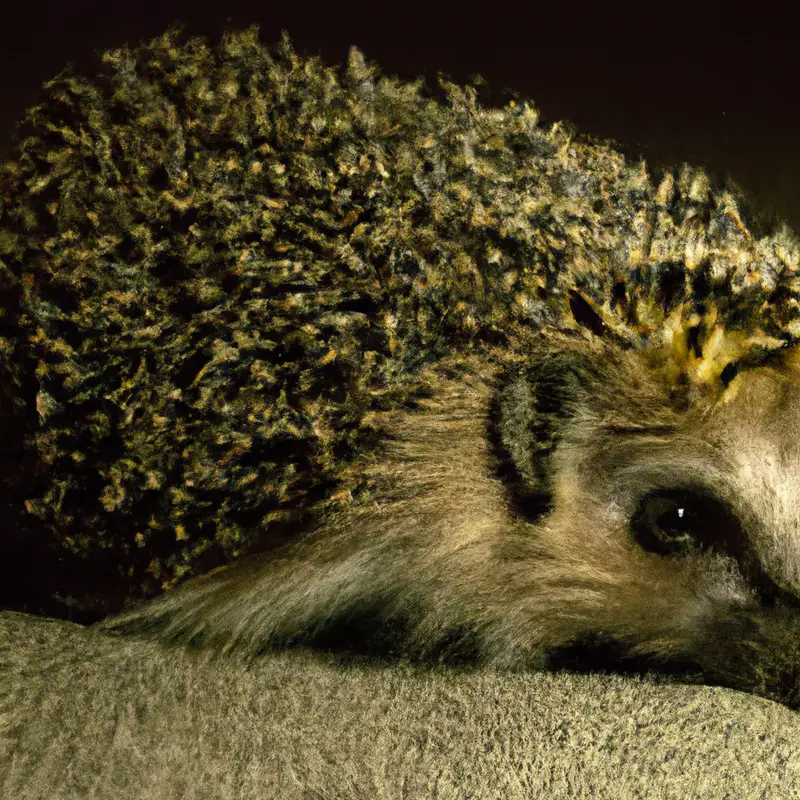
Environmental and economical impacts of moth infestations
Moth infestations can have significant environmental and economical impacts. From an environmental perspective, moth infestations can cause defoliation and damage to plants, leading to a decrease in biodiversity and disrupt ecosystems.
Furthermore, the use of chemical pesticides to control moths can harm beneficial insects and contaminate soil and water.
Economically, moth infestations can damage crops, resulting in reduced yields and financial losses for farmers. Additionally, the cost of implementing control measures and the need for frequent monitoring can add to the economic burden.
Hedgehogs as Natural Predators
Hedgehogs play a role as natural predators.
Hedgehogs’ feeding habits and preferences
Hedgehogs are insectivores and mainly feed on insects, worms, and snails. They have a preference for high-protein foods, such as beetles and caterpillars.
Hedgehogs will also eat frogs, mice, and even small snakes if they come across them.
While they primarily rely on insects for their diet, they are opportunistic eaters and will consume fruits and vegetables when available. However, their main food source remains invertebrates.
Moreover, hedgehogs are nocturnal creatures, so they do most of their foraging at night.
Hedgehogs’ ability to control moth populations
Hedgehogs have a natural ability to control moth populations.
Their diet consists of insects, including moths, which they actively hunt during the night.
Hedgehogs use their keen sense of smell and hearing to locate and catch moths, effectively reducing their numbers.
This makes hedgehogs valuable allies in managing moth populations, especially in areas where moths can be a nuisance or cause damage to crops and gardens.
Their natural hunting instincts make them efficient and effective in controlling moth populations in their habitats.
Hedgehogs and Moth Eggs
Hedgehogs have a natural instinct to target and consume moth eggs.
By consuming moth eggs, hedgehogs help to control moth populations and reduce potential damage to plants and crops.
How hedgehogs target moth eggs
Hedgehogs target moth eggs by using their keen sense of smell to locate the eggs. Once they find the eggs, hedgehogs will use their snouts to carefully dig them out of their hiding places.
They may also use their front paws to help uncover and extract the eggs.
Hedgehogs are especially efficient at locating and consuming moth eggs, making them valuable contributors to controlling moth populations.
Benefits of hedgehogs consuming moth eggs
Hedgehogs provide a valuable service by consuming moth eggs.
By doing so, they help control population sizes and prevent outbreaks.
This is beneficial because moths can potentially cause damage to crops, trees, and other plants.
By eating the eggs, hedgehogs contribute to maintaining ecological balance and reducing the need for chemical pesticides.
It’s a natural and effective way of pest management that benefits both the environment and human interests.
Hedgehogs and Moth Larvae
Hedgehogs play a role in controlling moth populations by predating on moth larvae.
The consumption of moth larvae by hedgehogs can have an impact on moth populations.
Hedgehog’s predation on moth larvae
Hedgehogs are known to be effective predators of moth larvae. They play a vital role in controlling moth populations by preying on the larvae.
Hedgehogs have a diverse diet that includes insects, and moths are a substantial part of their food source.
The spines on their backs may make them appear cute and cuddly, but they are actually skilled hunters when it comes to catching and eating moth larvae. This natural predation helps maintain a balance in the ecosystem by preventing moth populations from becoming too large and causing potential harm to plants and crops.
Impact of hedgehog consumption on moth populations
Hedgehog consumption has a significant impact on moth populations. Hedgehogs feed on moth larvae, which helps control their numbers.
By preying on these larvae, hedgehogs limit the population growth of moths.
This can be particularly beneficial in areas where moths are pests, as hedgehogs act as natural pest control agents. Their consumption of moth larvae helps maintain a balance in the ecosystem and reduces the potential damage caused by excessive moth populations.
Hedgehogs and Moth Pupae
Hedgehogs have a natural ability to locate and consume moth pupae.
Hedgehogs’ ability to locate and consume moth pupae
Hedgehogs have a remarkable ability to locate and consume moth pupae. Their keen sense of smell helps them detect the pheromones released by the pupae.
Once located, hedgehogs use their sharp teeth to crack open the pupae and consume them.
This plays a vital role in controlling moth populations, as it reduces the number of pupae that can develop into adult moths. In addition, hedgehogs also eat adult moths, further contributing to moth control in their environment.
Significance of hedgehogs in reducing moth population growth
Hedgehogs play a significant role in reducing moth population growth.
These adorable creatures are natural predators of moths and their pupae.
By preying on moths, hedgehogs help keep their populations in check, preventing them from becoming too large.
This is important because moths can cause damage to crops and vegetation.
So, having hedgehogs around can be beneficial for maintaining a balanced ecosystem and protecting plants from excessive moth damage.
Natural Pest Control Benefits
Using hedgehogs for pest control instead of chemicals offers several natural pest control benefits. Additionally, hedgehog-mediated pest control provides environmental advantages.
Advantages of using hedgehogs for moth control instead of chemical methods
Hedgehogs offer several advantages for controlling moth populations compared to chemical methods. Firstly, hedgehogs are natural predators of moths and their larvae, meaning they can effectively control moth populations without harmful chemicals.
Additionally, using hedgehogs as pest control is eco-friendly, as it avoids the use of chemical pesticides that can harm the environment.
Lastly, hedgehogs can be a sustainable and cost-effective solution, as they require minimal maintenance and can continue to control moths year after year.
Creating a Hedgehog-Friendly Environment
To create a hedgehog-friendly environment, consider their habitat requirements and ways to attract them to your garden.
Habitat requirements for hedgehogs
Hedgehogs have a few key habitat requirements to thrive:
- Shelter: They need safe places to sleep and hibernate, such as piles of leaves, logs, or dense shrubbery.
- Food and Water: Providing a variety of insects, slugs, and worms can help hedgehogs find enough food. They also need access to fresh water, so a shallow dish in a secure location can be helpful.
- Space to roam: Hedgehogs like to wander and explore, so having a spacious garden or yard with vegetation and low-growing plants can give them room to move around.
- Avoid pesticides: Using pesticides can harm hedgehogs and their food sources, so it’s important to avoid chemicals that can be harmful to their habitat.
Creating a hedgehog-friendly environment that meets these requirements can help support their population and contribute to maintaining a healthy ecosystem.
Frequently Asked Questions
Do hedgehogs eat all types of moths?
Hedgehogs do not eat all types of moths. While they are known to eat many insects, including moths, their diet can vary depending on their location and availability of prey.
Hedgehogs typically prefer larger moths with a higher protein content.
Certain species of moths that are toxic or have strong defenses may be avoided by hedgehogs. Additionally, hedgehogs mainly feed on the larvae and pupae stages of moths rather than adult moths.
Can hedgehogs completely eliminate moth infestations?
Hedgehogs play a beneficial role in controlling moth populations, but they cannot completely eliminate infestations. Hedgehogs primarily eat insects and are known to consume a substantial number of moths.
However, their impact on moth populations depends on various factors such as habitat, available food sources, and the severity of the infestation.
Although hedgehogs can help reduce moth numbers, they are not a foolproof solution for complete elimination. It’s important to use a combination of methods, including proper sanitation and pest control, to effectively manage moth infestations.
How do hedgehogs find moth eggs, larvae, and pupae?
Hedgehogs have a keen sense of smell, which helps them locate moth eggs, larvae, and pupae. They use their noses to detect the scent of these insects and track them down.
Additionally, hedgehogs have sharp hearing and can pick up on the sounds made by the movements of moth larvae and pupae.
This combination of smell and hearing allows hedgehogs to efficiently find and eat moth eggs, larvae, and pupae, making them a natural predator for controlling moth populations.
Final Verdict
Hedgehogs play a crucial role in controlling moth populations through their feeding habits and natural predatory instincts. They target moth eggs, larvae, and pupae, effectively reducing infestations and protecting gardens from damage.
By creating a hedgehog-friendly environment and encouraging their presence in our gardens, we can harness their natural pest control benefits without the need for harmful chemicals.
With their ability to locate and consume moth eggs, larvae, and pupae, hedgehogs offer a sustainable and environmentally friendly solution to managing moth infestations.

